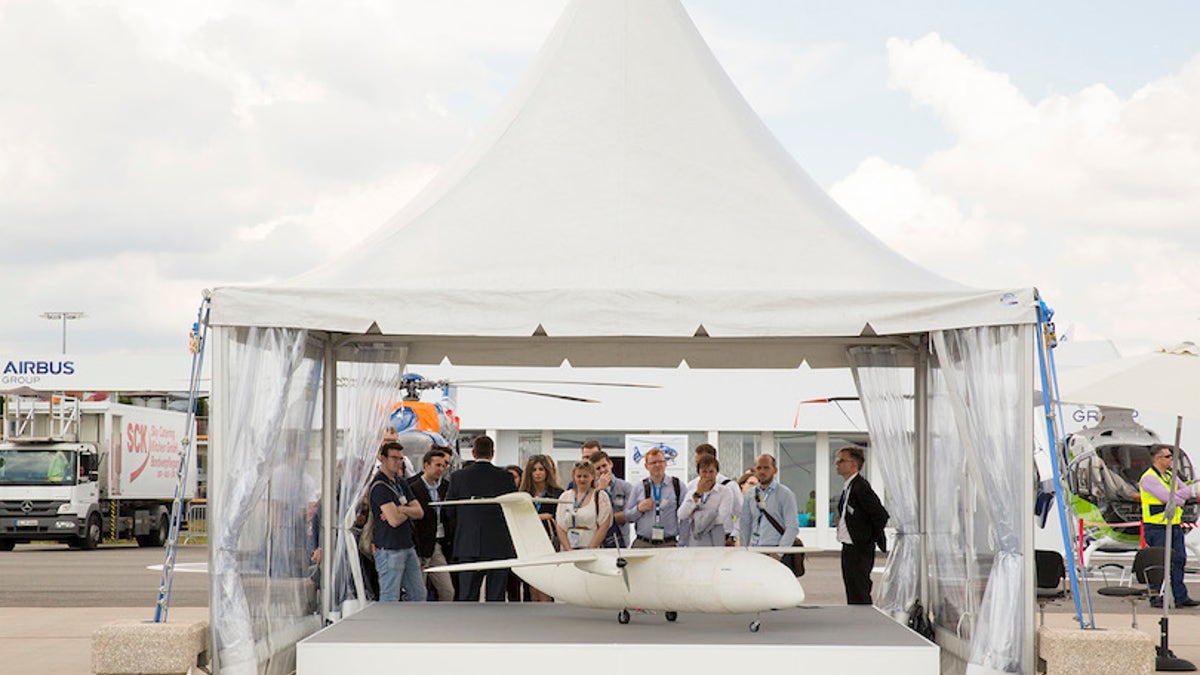
(Airbus Group)
This Thor can fly, but it doesn't have a hammer, nor is it arrestingly handsome. Instead, it's a 3D-printed drone that Airbus showed off last week at the Berlin air show.
About 13-feet long and complete with engine mountings and propellers, Thor is a first-gen prototype, designed to show off what 3D printing can offer the aerospace industry.
The prototype first flew last November near Hamburg, according to the AFP, though it did not perform test flights at the air show. Other than its electrical components, the entire aircraft is made from polyamide, the fine material that is the equivalent of "ink" in many 3D printers.
"This is a test of what's possible with 3D printing technology," Thor project head Detlev Konigorski told the AFP. "We want to see if we can speed up the development process by using 3D printing not just for individual parts but for an entire system."
Airbus and other aircraft manufacturers have used 3D-printed components in their designs for years. In addition to being incorporated into new plane designs, they're also used to cut maintenance costs for aging fighter jets.
The Royal Air Force has been experimenting with 3D-printed replacement parts for their Tornado fighters that could save 1.2 million pounds, or $1.7 million, by 2017.
In addition to Thor, Airbus has been developing several other 3D-printed innovations, including a partition for the cabin of commercial passenger jets that mimics the structure of living cells and bones. The so-called "bionic partition" design uses custom algorithms to mimic cellular structure and bone growth, creating a very strong structure that Airbus says weighs 45 percent less than traditional designs.
This article originally appeared on PCMag.com.
